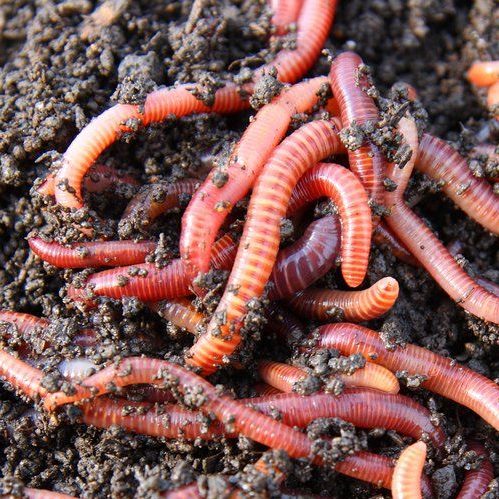Red Wiggler Express: Efficient and Affordable Worm Delivery Services
Red Wigglers: The Unsung Heroes of Organic Waste Recycling
Red wigglers, or Eisenia fetida, serve as important representatives in the natural waste recycling procedure, transforming discarded materials right into beneficial vermicompost. As the world increasingly seeks remedies to fight waste buildup and improve farming performance, understanding the role of these worms comes to be necessary.
What Are Red Wigglers?
The remarkable durability of red wigglers, clinically understood as Eisenia fetida, highlights their crucial duty in organic waste recycling. These little, reddish-brown earthworms are commonly discovered in decaying organic matter, such as compost piles and manure heaps. Lake Hickory Bait. Unlike other earthworm species, red wigglers thrive in nutrient-rich environments and are extremely reliable at breaking down organic materials, making them necessary for vermicomposting

(Lake Hickory Bait)In addition to their function in waste reduction, red wigglers add to soil wellness by improving dirt framework and oygenation through their tunneling activities (Lake Hickory Bait). Their existence in composting systems not only improves decay rates however likewise advertises a lasting method to waste management, illustrating their relevance in eco-friendly preservation efforts
Benefits of Composting With Worms
Composting with worms, specifically red wigglers, supplies countless benefits that improve both waste management and soil wellness. These worms successfully break down natural waste, converting it right into nutrient-rich vermicompost that enriches soil. This process increases decomposition, permitting a quicker recycling of kitchen scraps and other natural products contrasted to traditional composting methods.
Furthermore, the vermicompost created by red wigglers is teeming with helpful bacteria, which help enhance soil structure, aeration, and wetness retention. This enhances the overall wellness of plants, promoting strenuous growth and enhanced returns in yards and farming setups. Furthermore, using worms in composting reduces the production of greenhouse gases, such as methane, adding to an extra lasting waste monitoring system.

Just How to Beginning Vermicomposting
Developing a vermicomposting system is a straightforward procedure that can yield considerable benefits for both waste monitoring and soil enrichment. To start, pick an ideal container, such as a plastic container or wood box, with adequate air flow holes to ensure correct airflow. The measurements need to preferably be about 2 feet by 3 feet, enabling sufficient space for the worms to thrive.
Next, prepare bedding product, which can include shredded newspaper, cardboard, or coconut coir. This bed linen must be dampened to produce an ideal environment for the worms. Once the bed linens remains in location, present red wigglers (Eisenia fetida) into the container, usually around one extra pound of worms for every square foot of surface.
Complying with the placement of worms, include natural waste, such as fruit and vegetable scraps, coffee premises, and crushed eggshells. Avoid including milk, meat, or oils, as these can develop smells and attract insects. Finally, place the container in a shaded, temperature-controlled area to keep optimum problems for worm activity. With these actions, you will properly launch a vermicomposting system that adds to sustainable waste administration and enhances your soil.
Maintaining a Healthy And Balanced Worm Bin
(Lake Hickory Bait)Keeping a worm container thriving needs regular focus and like make certain the health and wellness of the red wigglers and the effectiveness of the composting process. Correct maintenance begins with monitoring the wetness levels; the bin must be damp however not saturated. An excellent guideline is to maintain a consistency comparable to a wrung-out sponge.
Gently blending the bedding and food scraps every couple of weeks protects against compaction and ensures that all worms have accessibility to oxygen. In addition, it is important to feed the worms suitably.
If the container becomes as well warm or cold, the worms might come to be stressed out. By diligently handling these factors, one can preserve image source a durable and efficient worm container.
Influence On Sustainable Living
The effective maintenance of a worm bin not just profits the wellness of red wigglers however also contributes considerably to lasting living practices. By recycling organic waste, such as kitchen scraps and backyard debris, red wigglers help divert significant amounts of material from garbage dumps. This decrease in waste not just reduces greenhouse gas exhausts but additionally minimizes the environmental worry connected with waste administration.
Furthermore, the spreadings produced by red wigglers act as a nutrient-rich organic fertilizer, boosting soil health and wellness and promoting plant development. This natural alternative to chemical fertilizers supports sustainable farming and gardening practices, lowering reliance on synthetic inputs that can hurt ecological communities. In addition, worm composting promotes awareness of waste management, encouraging people and communities to take on more lasting behaviors.

Verdict
In recap, red wigglers act as vital contributors to organic waste recycling with their effective decay of organic materials. Their ability to create nutrient-rich vermicompost boosts dirt health and supports lasting farming techniques. By incorporating vermicomposting right into waste administration methods, individuals and neighborhoods can substantially minimize waste while promoting environmental sustainability. The role of Eisenia fetida in promoting healthy and balanced ecological communities emphasizes the value of these microorganisms in accomplishing lasting living and boosting dirt fertility.